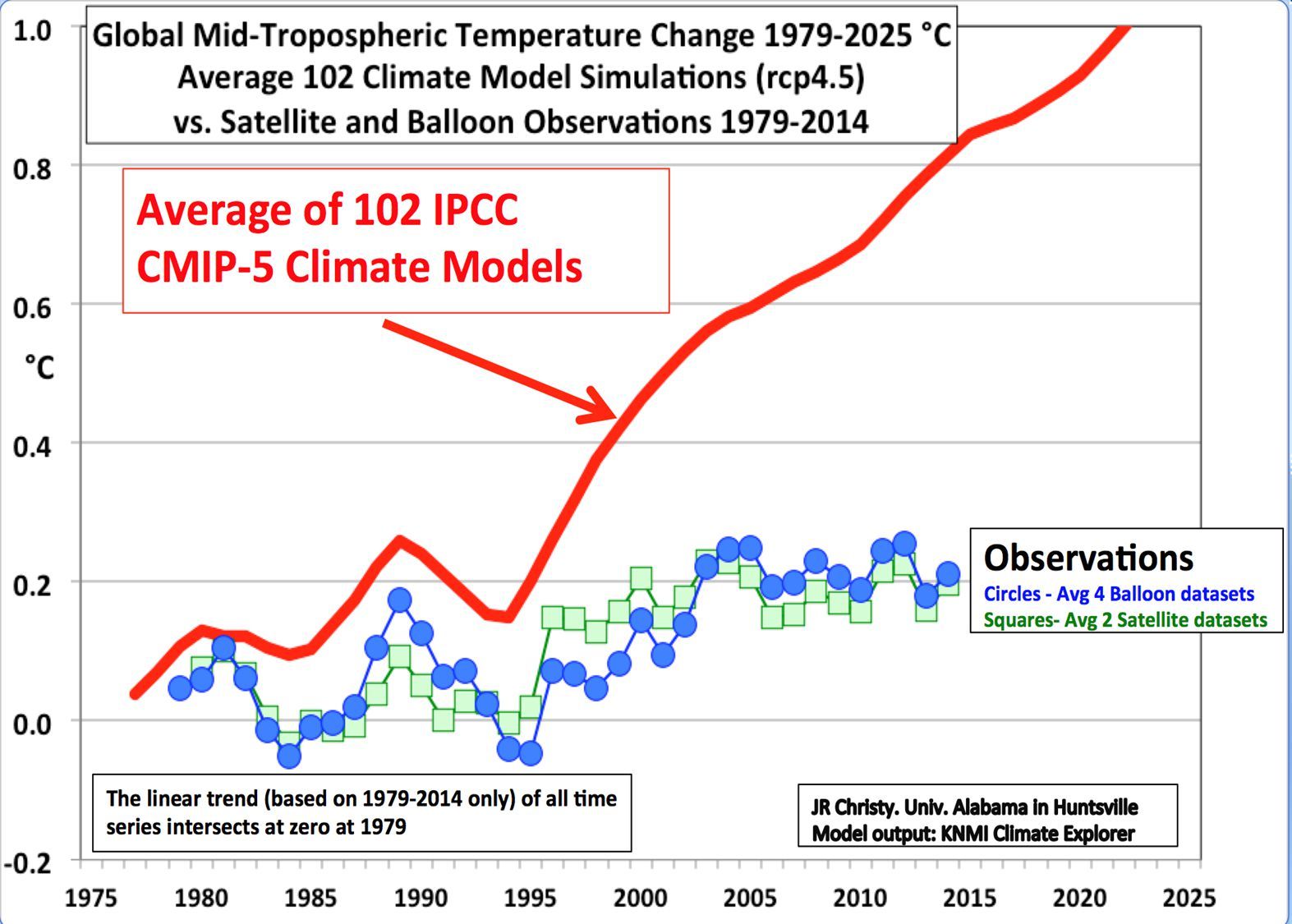Climate change 2: Clinging to models that don’t even come close
There’s a terrific new book out by climate scientists Patrick Michaels and Paul Knappenberger that exposes the “pseudoscience” that the “the debate is over” crowd relies on for their alarmist dictates. That crowd is big and powerful, but nowhere near 97% of climate scientists (or anybody else) endorse the impoverishing policies that will change our climate in ways that won’t even be measurable 75 years from now.
The book, Lukewarming: The New Climate Science that Changes Everything, acknowledges that climate change is real and partially man-made, but shows that the mild, gradual warming we are experiencing doesn’t come close to the catastrophic levels predicted by the model estimates used by the UN’s Intergovernmental Panel on Climate Change (IPCC).
Take a look at the graph and then meditate on this Saul Alinsky quote: “The threat is usually more terrifying than the thing itself.” Perhaps now we have a little insight into all the alarmist predictions and how this game is being played.

The two dips are due to the cooling effects of volcanoes that erupted in 1982 and 1991. The graph uses weather balloon and satellite datasets (which, though completely independent measurements, correlate quite nicely) and not surface temperatures which are biased by urban heating and “subject to some very controversial adjustments that almost always yield more warming than is evident in the raw data.”
The mean warming predicted by models used for the 2013 IPCC scientific assessment report was about 0.7°C. The warming observed by the satellites since 1979 is about 0.25°C (and weather balloon data was about 0.2°C.), about one-third of the models prediction used in the “authoritative” IPCC report. Here’s Michaels and Knappenberger’s summary of the situation:
It is obvious that the predicted rate of warming under undisturbed (nonvolcanic) conditions simply is too high. Why has our profession been so reluctant to admit the truth and say that it has made potentially the most costly and bad atmospheric forecast in human history? Maybe it’s human nature to hold on to a bad forecast.
As of this writing in April 2016, the warmest year in the instrument record (going back to about 1900) is 2015, in large part because of El Nino. To give an idea how badly the forecast is going – even if 2016 or 2017 turns out to be a record year – the disparity between the forecast and what is being observed will continue and, perhaps even grow.
The atmosphere isn’t warming nearly as fast as is predicted in forecasts that serve as the basis for some of the most onerous environmental regulations ever proposed (and adopted).
Peter Zeller is Director of Operations at Center of the American Experiment.